|
Fairview
Junior High |
|
...The Art-Deco Masterpiece of
Historic-Memphis |
|
|
|
|
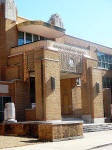 |
Memphis Fairview Junior High opened in the Fall of 1930.
It was a new school and adjustments were needed.
There was no library, no books or librarian. It
would be two years before there was a sports department.
There was no curtain for the auditorium - nor motion
picture equipment. It would be several years
before there was a Glee Club and school Band. But the
school did have something no other school in Memphis had:
It was a masterpiece of Art-Deco Architecture designed by
Memphis architect Noland Van Powell of the architectural
firm of Edward Lee Harrison. With its distinctive buff
color, Fairview certainly wasn't the traditional Memphis "red-brick
schoolhouse." The first principal was C. H.
Wadley who remained at the school until 1947 before moving on
to South Side High School. Fairview Junior High has been
on the National Register of Historical Places list since 1989. |
| Fairview
Junior High |
|
|
|
|
|
|
|
Special thanks to
Sue
Lee Johnson,
Nancy Tucker Douglass, Maureen Thoni White and Gene Gill
for
Fairview Yearbooks and to Nancy, Sue, and Gene for their
Fairview memorabilia and to Sue and Gene for scanning the
Fairview Yearbooks. |
|
| |
| |
|
|
| |
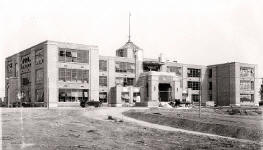 |
Fairview takes its name from the old Memphis
Fairgrounds complex. It was located to the south
and east of the school site and the school had a good
"view" of the Fair. The construction of the
school began in April of 1930 and was completed in
September of the same year. The cost was
approximately $335,000. The primary exterior
material is brick with cast stone, terra cotta, and
marble used for embellishments. The
embellishment panels incorporated into the design around the building, feature
educational iconography of the period - economics,
industry, and transportation. |
|
1930...Under Construction |
|
|
| |
|
There are also original art-deco light fixtures throughout
the building and there have been very few
modifications over the years. Fairview was the
2nd Junior High built in Memphis - two years after the
first, Bellevue Junior High. The school has been
used continually for grades 7 through 9 since 1930,
until it added the 6th grade and became Fairview
Middle School. It is the only school built in
the Art Deco style in a city where Art Deco isn't
widely represented. Thus Fairview represents a
rare and very fine example of this architectural
style. |
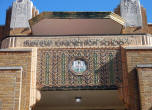 |
| |
An
Art Deco Masterpiece |
|
| |
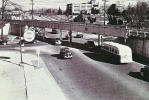 |
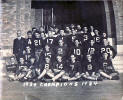 |
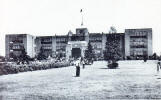 |
 |
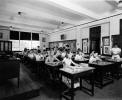 |
|
Central and East Parkway |
1934 Football Champs |
1945 |
1945 Library |
Vintage Classroom |
|
| |
|
|
|
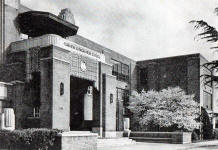 |
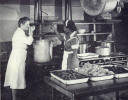 |
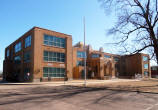 |
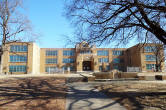 |
| 1946 |
1945
Kitchen |
2017 |
2017 |
|
|
|
|
|
|
Fairview Base Hospital
... and the
1937 Flood |
|
|
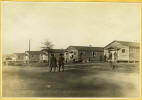 |
After moderate to heavy rainfall in December 1936, and
then heavy rain, snow, and sleet through most of January
1937, the Mississippi, Cumberland, and Tennessee Rivers
produced a record flood year - the worst single disaster
in American history to that date. Memphis set up a
major camp center with barracks at the Fairgrounds.
Medical attention was also desperately needed and with WPA
funds,
the adjacent Fairview Junior High became the Red Cross
Fairview Base Hospital.
A
total of 12 city schools served as makeshift hospitals
during this disaster and a total of 8,000 refugees were
eventually hospitalized in the Memphis area alone. |
|
Fairgrounds Barracks |
|
|
|
|
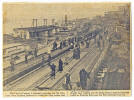 |
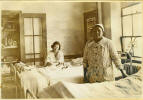 |
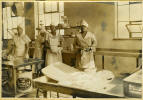 |
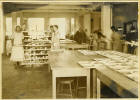 |
|
Memphis River Front |
Fairview Hospital Room |
Fairview Kitchen |
Fairview Kitchen
|
|
|
|
|
|
|
|
|
|
|
|
|
Fairview ...
and growing up |
|
|
|
Attending a big school like Fairview after grammar school,
meant MAJOR adjustments. There were no "cloak
rooms". Instead each student had an individual
locker in the halls. One not only had to remember
where that locker was, but also the combination-lock
number. There were many more teachers than in
the grammar schools. And every hour students changed
classrooms for a different subject with a different
teacher. There was a strange subject
called "Civics". Lots of homework - and all
students were expected to do it ON TIME. . Oh,
yes, there was something called "Study Hall". Did
anyone actually study during Study Hall? |
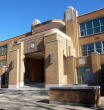 |
|
|
|
|
The transition was difficult, and maybe even a little
scary, but by the end of the first semester, everyone
seemed to know their way around - usually by the time of
the first hayride.
All hail Fairview!!! |
|
|
|
|
|
|
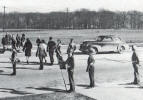 |
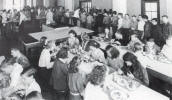 |
 |
 |
 |
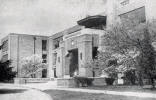 |
|
Safety
Council |
Cafeteria 1945 |
Teachers 1947 |
School
Song |
Talent
Shows |
Spring
- Cherry Trees |
|
|
|
|
|
|
|
|
|
|
|
|
|
Fairview ...
and Art Deco Architecture. |
|
|
 |
<
In "Memphis: An Architectural Guide", the most important
book about Memphis architecture, architect's Eugene Johnson and
Robert Russel Jr. consider Fairview "... the architectural gem
of the school system and one of the finest buildings in the
whole city." "...and the real mind behind Fairview was
Noland Van Powell. It's fair to say that this is his
surviving masterpiece." |
|
|
|
|
Art Deco
is an influential design style that first appeared in France just
before World War I and took its name from the "Exposition
Internationale des Arts Decoratifs et Industriels Moderns" held in
Paris in 1925. . It flourished internationally in the
1920s, 1930s, and 1940s and combines craft motifs with Machine Age
imagery and materials. It's often characterized by rich
colors, bold geometric shape, curving forms, sharply defined
outlines and lavish ornamentation. |
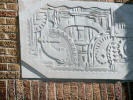 |
|
|
|
|
|
|
|
Fairview's very recognizable
Art Deco features... |
|
|
|
|
|
|
|
|
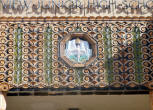 |
Buildings were richly embellished with hard-edged, low-relief
designs, geometric shapes, and stylized floral and sunrise
patterns. Shapes and decorations inspired by Native
American artwork also appear in Art Deco. During
it's heyday, Art Deco represented luxury, glamour, exuberance
and faith in technological progress and was often called
"Machine Age Art". |
|
|
|
|
Noland Van Powell (1904-1977) was an accomplished painter and
architect who actually had no formal training as an architect.
He served as an apprentice for the Harrison architectural firm
before eventually branching out on his own. The fact that
he designed Fairview as an apprentice, makes the finished
building even more remarkable. His work lives on in the
designs of the Peabody's Plantation Room, the old Memphis Steam
Laundry Building, the Farnsworth Building, Greyhound bus
station, the Toddle House diners, and dozens of fine Memphis
homes. |
|
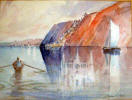 |
|
Noland
Van Powell |
|
|
|
|
 |
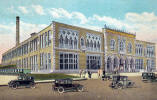 |
 |
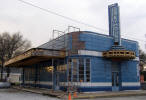 |
|
Noland Van Powell |
Memphis Steam Laundry |
Farnsworth |
Greyhound |
|
|
|
|
and
some Art Deco designs in other parts of the country . |
|
|
|
|
|
|
|
Fairview ...
and the Cherry Trees
|
|
|
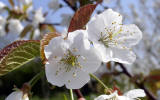 |
Each
springtime, students at Fairview were treated to a spectacular
display of cherry blossoms. This was such a major part of
the school year that photos of the blooming trees were always
featured in the yearbooks. The trees were planted during
the N.Y.A (National Youth Association) which was part of the
W.P.A program. From recent photos it appears that the
trees died or were re-moved. New Cherry trees should be
planted because they were a special treat which was sincerely
appreciated by students, faculty, and visitors.
|
|
Cherry
Blossoms |
|
|
 |
 |
 |
 |
|
Cherry
Blossoms |
Cherry
Blossoms |
Cherry
Blossoms |
Cherry
Blossoms |
|
|
|
 |
 |
|
1945
Yearbook |
1948
Yearbook |
|
|
|
|
|
|
|
|
|
|
|
Fairview ...
and some Yearbooks
Every
page of the five Fairview Yearbooks (below) are posted on this
website. Click on any yearbook cover to open the pages of
that yearbook.
Thanks to Nancy
Tucker Douglass, Sue Lee Johnson, Maureen Thoni White, and Gene
Gill for the use of their yearbooks on this website and to Sue
and Gene for scanning the books.. |
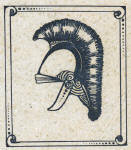 |
| |
Fairview Logo
|
|
|
|
|
|
|
|
|
|
|
Fair-Views ...
the school Publications
|
|
|
|
Fair-Views Magazine . Jan 1938.
Before the school published a weekly newspaper, these little 20 page
books were produced by the students and published once a month
... > |
 |
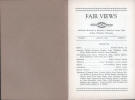 |
| |
|
Fair-Views
1938 |
Page 1 |
|
|
|
|
|
|
|
|
|
|
|
|
|
|
|
|
|
|
Fairview ...
and some "Vintage" Graduates
|
|
Most graduates from Fairview continued on to high school at Central, Messick, and
Tech. After three years with their junior high "BFF"
they suddenly moved in different directions and rarely or never
saw each other again. The Fairview graduates featured below
all went to Tech High School and they 're the exception, because
they have remained close friends for all these years. Many
of these friendships began in grammar school as far back as 1937 |
 |
|
|
|
|
|
|
|
 |
 |
 |
 |
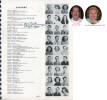 |
 |
 |
|
1947
Seniors |
Who's Who
1947 |
1947
-Seniors |
1947
-Seniors |
1947
-Seniors |
1947
-Seniors |
1947
-Seniors |
|
|
|
|
|
|
|
|
|
|
|
 |
 |
 |
 |
 |
| 1949 - 9th
grade |
1949 - 9th
grade |
1949 - 9th
grade |
1949 - 9th
grade |
1949 - 9th
grade |
|
|
|
|
|
|
|
|
Fairview Middle School ... |
|
|
|
The
JIM CROW laws were state and local laws enforcing racial
segregation in the South. These laws were in effect at
Fairview until 1965 but the school was not immediately
integrated. First there was "busing" which resulted in
massive "white flight" in the Memphis Schools. In 1973 the
district had 71,000 white students. In just 4 years 40,000
white students left. Sometime during this period,
the school district reorganized the junior high schools into
"Middle Schools" and Fairview became "Fairview Middle School"
for grades 6 to 8. |
 |
|
|
|
|
During the
last few years, the old school had begun to look a little shabby
with quite a few broken windows. There were only about 300
students enrolled. The city government obviously was aware that this was a valuable piece
of land next to Kroc Center and Tiger Lane. The closed
Coliseum was set to be demolished ... and Fairview sat on a great corner
next door. Hmmm. The school's days
were surely numbered. But two events
occurred at Fairview: The
district replaced a lot of broken windows around the building.
And then the city suddenly spent millions to
totally renovate the grand old building - inside and out. Old Fairview was
new again and more beautiful than ever. Surely
there was a good reason for this
renovation? |
 |
| |
Broken
Windows |
|
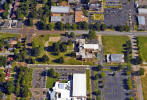 |
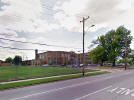 |
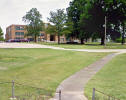 |
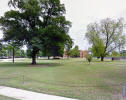 |
|
Aerial View
|
Fairview
campus |
Fairview
campus |
Fairview campus |
|
|
|
|
|
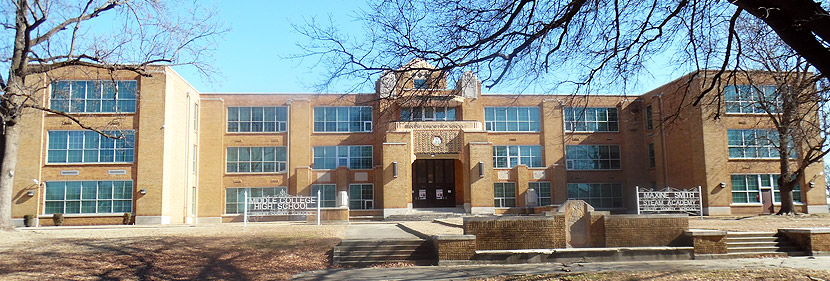 |
|
|
|
|
|
"Fairview" today ...
|
|
|
|
The letter on the right was sent home with the students
who were to attend the school for 2014-2015 year. As far
as we can determine this was the only notification about a major
change in the school.
If you are reading the letter for the first time, it's a sure
bet that you'd think the Fairview Middle School would be renamed
the "Fairview STEAM School". But ...
In one of the best-kept secrets in Memphis, Fairview
Middle School was
quietly renamed the "Maxine Smith STEAM Academy." |
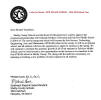 |
|
|
 |
Once
again, the city government appears to
re-write History by changing the name of a historic building.
In this case, the change probably saved Fairview from demolition. But the new name will never
be fully recognized because anything written about the school
will always contain a footnote that this was originally Fairview
Junior High. Why wasn't this "new" school simply named the
"Fairview STEAM Academy?"
Maxine
Smith's name deserves to be on a building - a newer building, not
on a building dating from 1930. |
|
|
|
|
|
|
|
|
|
|
|
|
|
|
|
|
Fairview Junior High Memorabilia
... |
|
|
 |
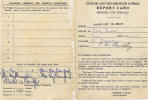 |
 |
 |
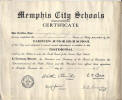 |
|
1945 Report
|
1946 Report Card |
C.H. Wadley 1930 |
T. C. Brindley |
1948 Diploma |
|
|
|
 |
|
|
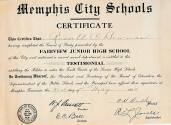 |
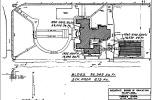 |
|
Cheerleaders 1947 |
|
|
1935 Diploma |
School Plan |
|
|
|
|
|
|
|
|
|
|
|
|
|
|
|
|
|
|
|
|
Credits |
|
|
|
The
Historic-Memphis website does not intentionally post copyrighted
photos and material without permission or credit.
On
occasion a "non-credited" photo might possibly be posted because we
were unable to find a name to give credit. Because of the nature of
our non-commercial, non-profit, educational website, we strongly
believe that these photos would be considered "Fair Use. We have
certainly made no monetary gain, although those using this website
for historic or Genealogy research have certainly profited. If by
chance,
we have posted your copyrighted photo, please contact us, and we'll
remove it immediately, or we'll add your credit if that's your
choice. In the past, we have found that many photographers
volunteer to have their works included on these pages and we'll
also do that if you contact us with a photo that fits a particular
page. |
|
|
|
The "Historic-Memphis" website would like to acknowledge and thank the
following for their contributions which helped make this website
possible:
Memphis
Public Library, Memphis University Library, Memphis Law Library,
Memphis Commercial Appeal, Memphis Press Scimitar, Shelby County
Register of Deeds, Memphis City Schools, Memphis Business Men's
Club, Memphis Chamber of Commerce, Memphis City Park Commission,
Memphis Film Commission, Carnival Memphis, Memphis Historical
Railroad Page, Memphis Heritage Inc, Beale Street Historic District,
Cobblestone Historic District, Memphis Historic Districts, Vance
Lauderdale Family Archives, Tennessee State Archives, Library of
Congress, Kemmons Wilson Family, Richard S. Brashier, Lee Askew,
George Whitworth, Woody Savage and many individuals whose assistance is
acknowledged on the pages of their contributions. Special
thanks to Memphis Realtor, Joe Spake, for giving us carte blanche
access to his outstanding collection of contemporary Memphis photos.
We do not have high definition copies of the photos on these
pages. If anyone wishes to secure high definition photos,
you'll have to contact the photographer or the collector.
(To avoid any possibility of contributing to SPAM, we do not
maintain a file of email addresses for anyone who contacts us). |
|
|
|
|
|
|
|
<><><><><> |
|
|
|
|
|
|
|
|
|